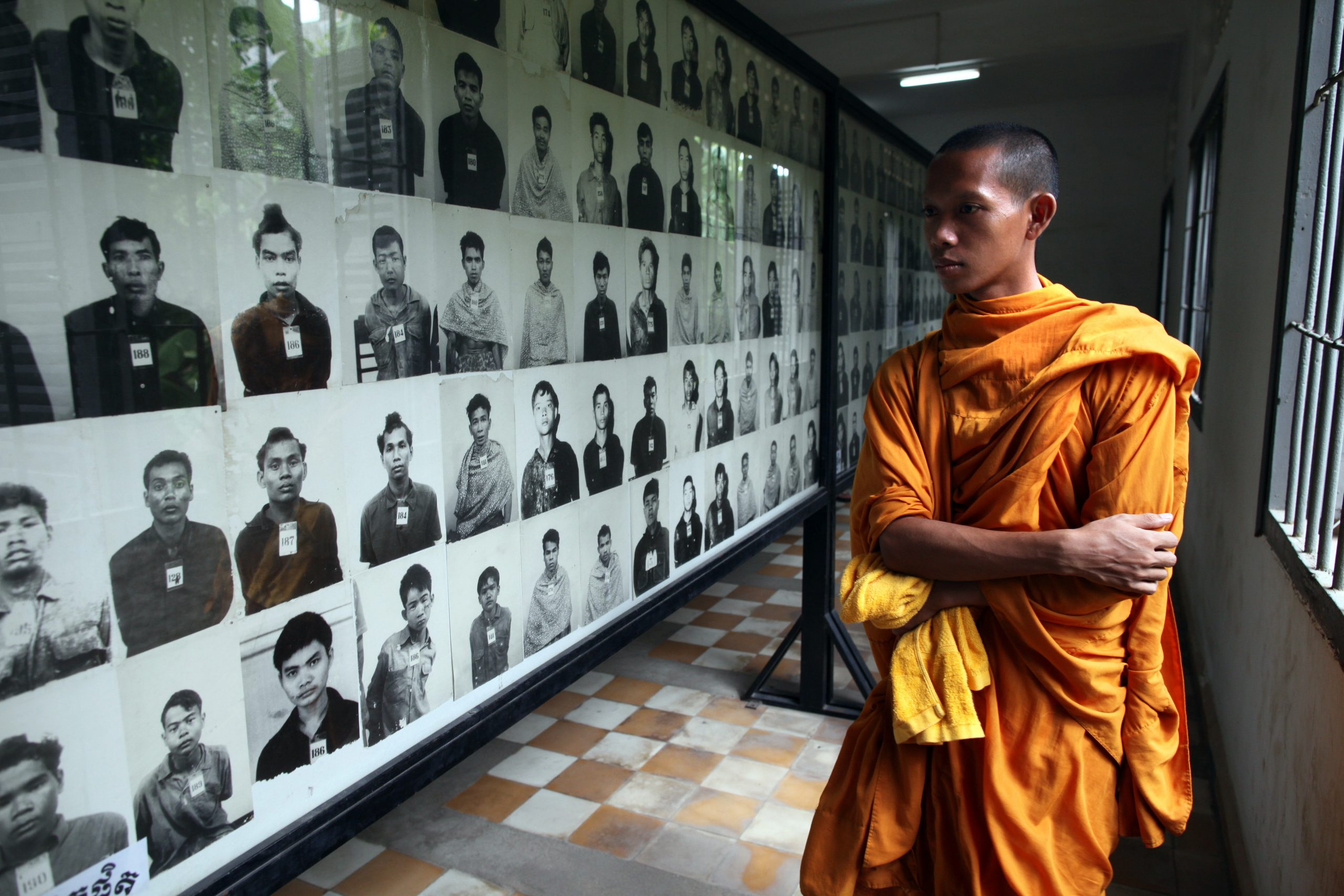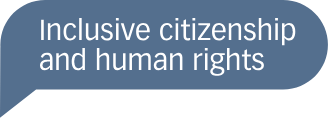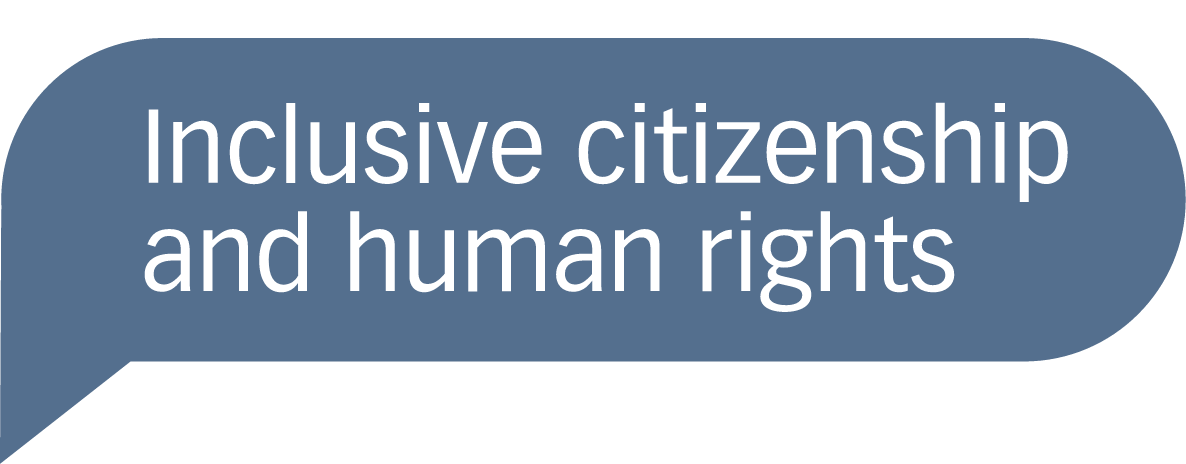
This guide provides a curated selection of key resources, from policy documents to research initiatives, designed to support policymakers, activists, and scholars in their efforts to understand and address atrocity risks and promote prevention strategies. It is by no means an exhaustive list, but rather an introduction to distinguish between useful resources, and provide a starting point for understanding this complex field. This guide was originally published at Mass Atrocity Responses in 2024 and has been adapted and republished with permission.
What are atrocity crimes and where to begin – an introduction to the field
Atrocity crimes, as defined under international law, include genocide, war crimes, crimes against humanity, and ethnic cleansing. These crimes represent some of the gravest acts of violence humanity can face—but they can be predicted—and therefore prevented.
A few policy documents and a research based introductory book provide a good place to start for anyone interested in learning more about mass atrocity prevention.
Start your learning with these foundational documents:
- Fundamentals of Genocide and Mass Atrocity Prevention by Scott Straus: This book serves as a comprehensive introduction to the field. Best of all, it is free to download. Published by the US Holocaust Memorial Museum.
- Framework of Analysis for Atrocity Crimes by the UN Office on Genocide Prevention and the Responsibility to Protect: This document is a vital tool for assessing risks and outlining strategies for atrocity prevention.
Key UN Policy documents:
- Implementing the Responsibility to Protect (2009): Introduces the three pillars of R2P.
- World Summit Outcome (2005): Lays the foundation for the R2P doctrine adopted by the UN General Assembly.
Understanding Risk Assessment and Early Warning
To predict and prevent atrocities it is necessary to analyze and monitor the many potential motivations and succession of events that can lead to their perpetration. This can be done through risk assessment (RA) and early warning (EW) mechanisms. Both risk assessment and early warning mechanisms are essential for a comprehensive atrocity prevention strategy, as they address risks from different timeframes. (Click here for more in-depth overview)
Risk Assessment – RA: Focuses on mapping long-term structural conditions and identifying factors that may increase the risk of atrocities.
Early Warning – EW: monitors short-term and dynamic indicators of escalating violence or discrimination to provide actionable alerts.
Datasets and databases can be a useful tool for predicting and understanding mass atrocities. (Click here for an overview of the most useful datasets)
Examples of RA and EW in Practice: In order to prevent atrocities, situations of insecurity must be monitored and analyzed. Multiple projects do precisely this, monitoring warning indicators and risks through atrocity prevention frameworks and tools. Examples of RA and EW in practice illustrate how these approaches are applied in real-world contexts:
- US Holocaust Memorial Museum: (RA) Research-driven risk assessment of atrocity crimes worldwide, developed by the US Holocaust Memorial Museum. By researching contexts worldwide where violence can happen or is currently ongoing, the project produces a ranked list and an interactive map of which countries are prone to or in the midst of mass atrocities. Click here for more in-depth information.
- Populations at Risk by the Global Centre for the Responsibility to Protect (GlobalR2P)(EW): This mechanism monitors high-risk situations and tracks escalating violence or discrimination. Its dynamic approach helps predict atrocities in the short term, enabling timely preventive action.
How to prevent atrocities – Frameworks
“How can atrocities be prevented?”
“What steps are necessary for successful prevention?”
“Who is supposed to prevent atrocities?”
Atrocity prevention frameworks aim to answer these questions, acting as the foundations on which prevention efforts can, and should, be carried out.
Frameworks provide the foundation for effective prevention efforts.
- Responsibility to Protect (R2P): UN doctrine advancing States’ responsibility to protect populations from genocide, war crimes, ethnic cleansing and crimes against humanity. Since the creation of R2P in 2005, its 3 pillars outline that each Member State has the responsibility to protect their population, that the International community should support States’ protection efforts, and that the International community should intervene when protection is failing. According to the R2P doctrine, preventing atrocity crimes ought to be ensured peacefully, with military intervention being used solely as a measure of last resort.
- UN Framework of Analysis for Atrocity Crimes: UN-produced tool for the integrated analysis and risk assessment of atrocity crimes. It is an in-depth list and explanation of the risk factors of atrocities and their respective indicators, applicable to identify atrocities before they happen and dangerous contexts where they could potentially happen. Published in 2014 as an improved version of the 2009 framework specific to genocide, it advocates for the use of peaceful measures first and foremost, and if all else fails, the use of coercive measures and force.
- UN Legal Framework of Genocide and Related crimes: Set of treaties, laws, and conventions that regulate and justify UN measures to prevent, respond to, and punish genocide and its related crimes. The list is divided to account for International Human Rights Law and International Humanitarian Law, and encompasses legal and humanitarian accords that challenge and punish discriminatory, violent, and inhumane practices.
- Global Centre for R2P – Framework for Action for the Responsibility to Protect: A Resource for States: Supplement for existing atrocity prevention frameworks, aimed at assessing and filling gaps in implementation. Published in 2023, it provides numerous actions for States to take for developing and improving their own prevention of atrocities, with suggestions and recommendations addressing all levels of implementation. Main areas of focus are on implementation at the National level, Bilateral Cooperation and Influencing, Regional Cooperation, and Multilateral Cooperation.
- EU Responsibility to Protect – Atrocity Prevention Toolkit: EU-produced tool for atrocity prevention, focused on both analysis and action. Published in 2018 to target EU Delegations, it provides information on structural risk indicators, imminent warning signs, and how to respond to warnings. By encouraging aid programs, research initiatives, and policymaking dialogue, the toolkit aims to strengthen local resilience for prevention in order to minimize intervention.
- UK Approach to Preventing Mass Atrocities: UK strategy on dealing with, de-escalating, and reporting of atrocities. The strategy involves early-warning tools and reporting mechanisms, diplomatic and de-escalation measures, supporting research and investigations, and defense tools. It also ensures active support of the R2P.
- US State Department – U.S. Strategy to Anticipate, Prevent, and Respond to Atrocities: Governmental strategy on coordinating action for the prevention of atrocities. Established in 2022, the strategy is governmentally supported due to the Elie Wiesel Act of 2018, which regards atrocity prevention as in the US national interest. This strategy outlines actions and goals to follow to prevent atrocities, as well as methods to encourage and promote them.
- US State Department – Atrocity Risk Assessment Framework (ARAF): US-produced framework to identify atrocities, recognize and mitigate their risk, and ensure their assessment. This 2022 framework educates policymakers on which actors to account for, which risk factors to identify, and what an atrocity assessment ought to include and discuss.
- US Mass Atrocity Response Operations (MARO): US strategy of approaching atrocity prevention through planned military intervention. The MARO handbook provides information on how to plan and execute military actions to ensure the safekeeping of civilians. Although it mainly targets ongoing atrocities, this type of approach can be used for atrocity prevention too, especially through peacekeeping operations.
- APR2P Report – Centralising Gender in Mass Atrocity Prevention: A Tool for Action in the Asia Pacific Region: Framework tool for atrocity prevention with a gender lens, focused on recommendations and existing gaps. This 2019 document by AP scholar Sarah Teitt provides information on the reasons and manners to concretely carry out gender-sensitive atrocity prevention, both for structural, direct, and late-stage prevention efforts.
Who prevents atrocities? – Organizations, institutes and networks
Preventing atrocities is a collaborative effort that requires structured planning, funding, and expertise. Governments, NGOs, research institutes, and international networks each play a critical role in identifying risks, implementing prevention strategies, and promoting accountability.
Swift and effective collaboration is often necessary to ensure the prevention of atrocities, both at regional and international levels, so networks grant individual actors, organizations, and institutions concrete opportunities to work together.
These organizations, institutes, and networks play a vital role in implementing strategies, conducting research, and promoting collaboration for atrocity prevention. Click below to learn more about their missions and contributions:
- UN Office on Genocide Prevention and the Responsibility to Protect (UNOSAPG) : UN Office focused on the prevention of atrocities. It holds the power to advocate for further consideration of atrocity prevention through outreach, participation during official UN meetings, and advocacy through official channels. As a smaller office, its power and influence are somewhat limited, but its position within the New York UN building provides strategical advantages for advocacy.
- Global Center for the Responsibility to Protect (Globalr2p) : International center founded upon the establishment of the Responsibility to Protect doctrine. Its mandate focuses on advocacy, research, and consultancy regarding atrocities and their prevention. The center monitors situations of (in)security.
- Genocide Watch : Advocacy group for the prediction, prevention, cessation, and punishment of genocide and mass murder. The group raises awareness on genocides and their prevention through education and research, influences public policy, coordinates support work, and seeks justice for victims and survivors. The group’s levels of Genocide Alerts are used to ascertain whether a genocide is in its early stages, stage of preparation, or is actively ongoing. Click here for more in-depth information.
- Protection Approaches charity: UK-based charity and advocacy NGO that aims to mainstream a “prevention approach”. It focuses on community initiatives, education, advocacy, research, training, and producing briefings and reports.
- The Norwegian Center for Holocaust and Minority Studies (HL-senteret) : Center affiliated with the University of Oslo, focused on research and education on topics related to the Holocaust, genocide, racism, antisemitism, and minorities. Researchers at the center also carry out educational initiatives and research projects addressing atrocities, their prevention, and their impact on societies.
- The Simon-Skjodt Center for the Prevention of Genocide : Center affiliated with the U.S. Holocaust Memorial Museum, aiming to prevent, respond to, and punish mass atrocities. The center carries out country case studies, monitors and identifies atrocity risks globally, and advocates for education and training on mass atrocities and their prevention.
- The Auschwitz Institute for the Prevention of Genocide and Mass Atrocities (AIPG) : Institute working to prevent genocide and mass atrocities, located in Poland and operating internationally. The institute carries out multiple education, training, assistance, and collaboration programs, advocating and informing experts, leaders, and officials on atrocity prevention strategy and knowledge.
- Lemkin Institute: International institute for the support of grassroots initiatives for genocide prevention. The institute conducts early warning and risk assessment research with Red Flag Warnings for Genocide, and Active Genocide Alerts, and communicates these through official statements, courses, and ICC communications.
- Montreal Institute for Genocide and Human Rights Studies : Canadian research institute focused on human rights, conflict prevention and emerging technologies. The institute develops projects and initiatives, carries out research, promotes training and education programs, and provides consultations to policymakers and diplomats.
- Zoryan Institute : Academic and scholarly center dedicated to the issues of human rights, genocide, and diasporas. The institute is founded upon the recognition and study of the Armenian genocide, and educates academics, artists, and governments through publications, conferences, and academic programs.
- Budapest Centre for Mass Atrocities Prevention: Hungary-based center focused on the study, education, and prevention of atrocities. Founded in 2011, the center organizes educational initiatives and webinars, carries out and publishes research, and acts as a platform for atrocity prevention experts and diplomats to connect.
- Global Network of R2P Focal Points : International network of senior government officials committed to the prevention of atrocity crimes. Senior officials can be designated as Focal Points by governments with interest in promoting the R2P principle, for which they become advocates and contact persons within their countries’ governments. Annual meetings have been conducted between Focal Points since 2011.
- Global Action Against Mass Atrocity Crimes (GAAMAC) Network: International network and platform for organizations and states to connect and collaborate for AP, with the aim of supporting States wishing to implement or improve their national prevention mechanisms and policies. Established in 2013 and partnered with multiple NGOs and Ministries of Foreign Affairs, it provides training and publishes resources to educate on atrocity prevention. Multiple regional chapters: Americas Initiative, Africa Working Group, Asia Pacific Working Group.
- Asia-Pacific Partnership for Atrocity Prevention (APPAP) Network : Regional network of collaborators from Asia and the Pacific region, aimed at preventing atrocities. This network carries out research, education, training, outreach, and advocacy to implement atrocity prevention measures.
- International Association of Genocide Scholars : International association of scholars focused on the study, prevention, and punishment of genocide. The association, founded in 1994, contributes to genocide research and spreads awareness, holding conferences and co-publishing articles within the Genocide Studies and Prevention journal.
- International Network of Genocide Scholars (INOGS) : International network of scholars with a non-partisan outlook on genocide research and mass atrocities. The network organizes conferences, grants awards, and publishes research in the Journal of Genocide Research (JGR).
- Alliance Against Genocide: International coalition for the creation of institutions and advocacy to prevent genocide. It aims to spread information and research, create early-warning systems and networks, ensure diplomacy and mediation, and hold perpetrators accountable for the crime of genocide.
- The European Network for investigation and prosecution of genocide, crimes against humanity and war crimes (Genocide Network): Network for the collaboration of European countries to investigate and prosecute atrocity crimes. Created by Eurojust in 2011, the network encourages and facilitates European countries’ collaboration against atrocity crimes. The network’s research and investigations also act as the groundwork upon which atrocity prevention and punishment can be founded.
Continue Your Work – Additional Resources
Looking to deepen your understanding of atrocity prevention? These resources provide further insights and tools to enhance your knowledge:
- Gallagher, Lawrinson, and McKay (2022): A comprehensive bibliography on the Responsibility to Protect (R2P), featuring essential references for researchers and practitioners. Read more here.
- Mass Atrocity Response Blog: Stay updated with insights, case studies, and detailed discussions on atrocity prevention and response strategies.
For a broader perspective, explore related content under our topics Mass Atrocity Prevention and Understanding Mass Atrocities.
Related Resources
Find digital tools produced in cooperation with partners and researchers from different regions.



